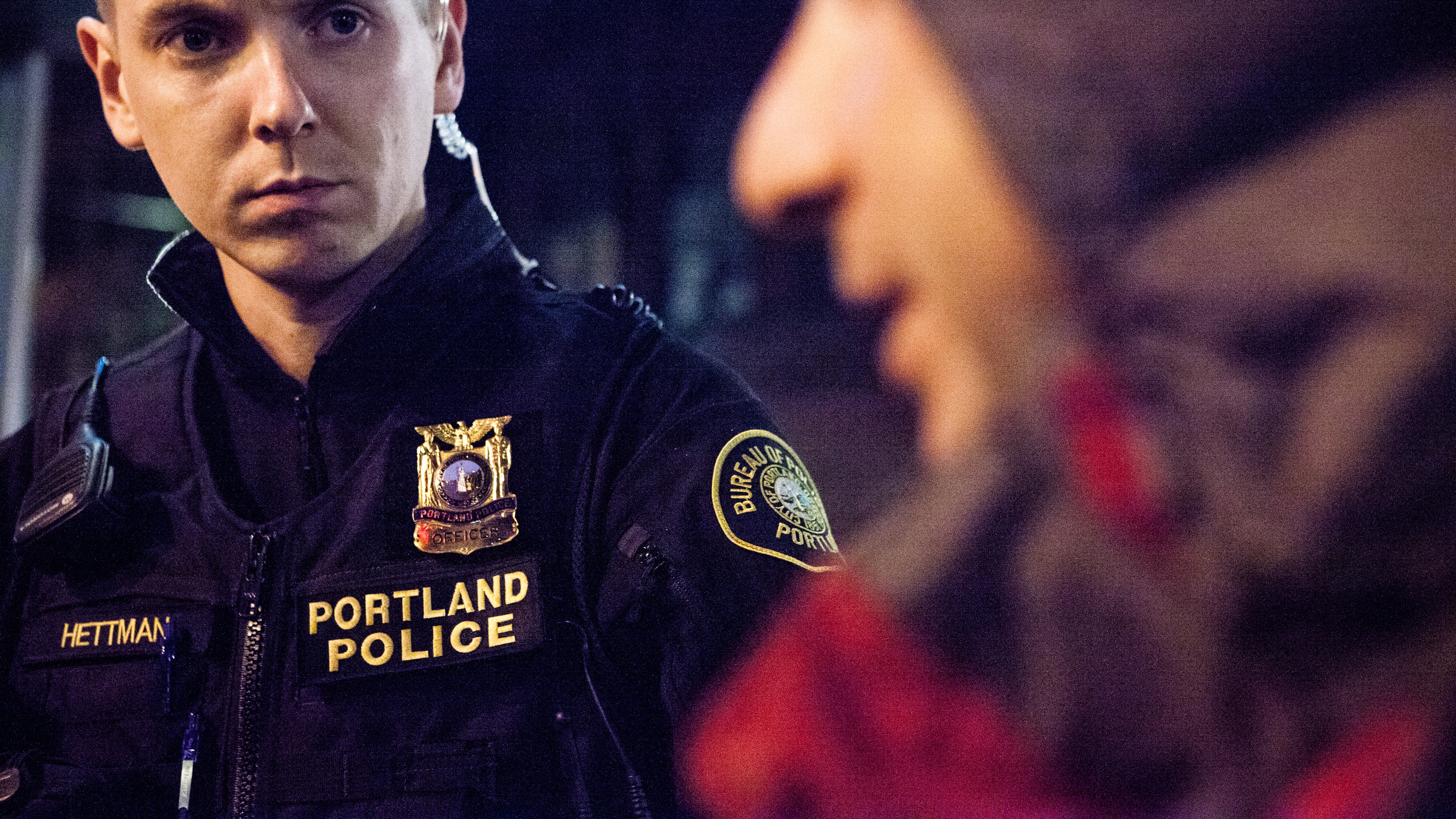It’s an otherwise slow Monday night, but Officer Casey Hettman is tense. He and two other Portland police officers move through a dingy hallway and flank the locked apartment door.
Behind the door is an agitated man who believes President Obama is ordering him to kill.
The cops have been summoned to the Helen M Swindells Apartments in Old Town by the man’s county social worker, who believes he’s become a risk to himself or others.
The social worker tells the cop the man inside suffers from mental illness. He wants cops to put the man on a mental-health hold and deliver him to a hospital for observation.
Oh, and one thing, the social worker says: He likes to fight cops.
The social worker knocks. The officers brace themselves. Nothing.
Hettman is thinking, What’s this guy doing? Maybe this guy is getting something to hurt us?
“It’s not until that door opens,” Hettman says later, “and you can see their hands, see their face.”
Hettman and the other officers are about to enter what are often the most critical moments between police and those in a mental-health crisis: the first 30 seconds of contact.
That’s when officers have to spot the warning signs of someone who may have lost touch with reality—the person’s motion, tone, level of aggression—and decide whether the threat to their own safety outweighs the needs of the person they’re supposed to be helping.
In the past, the choices a few Portland police officers have made in these pivotal few seconds prompted a U.S. Department of Justice investigation and a finding in September that cops have a “pattern and practice” of using excessive force against people with mental illness.
Portland quickly reached a settlement with the DOJ and scrambled to find $5.3 million to beef up social services, create a triage center, and expand units of officers trained to deal with the mentally ill.
Mayor-elect Charlie Hales and Police Chief Mike Reese (whom Hales plans to keep on the job) say they will also demand better investigation when cops do use their fists, baton, pepper spray, Taser or gun.
Beneath this tone of compliance runs an undercurrent of resistance and resentment. Reese, while talking about being a reformer, had earlier signaled he disagreed with the DOJ’s findings. And the Portland Police Association, the city’s police union, says the DOJ settlement threatens the safety of front-line officers.
And it’s simply hard to buck the decades-long attitude of police, says Mike Stafford, a former training coordinator at the state’s police academy. Stafford says police are trained to protect themselves first and face the consequences for their actions later.
“A common saying is, ‘It’s better to be judged by 12 than carried by six,’” he says.
Missing in this debate have been the voices of the officers themselves.
Over the past several weeks, WW has ridden with officers on patrol, watched how they deal with people with mental illness, and talked to them at length about what the proposed changes will mean.
Some say a fundamental cultural shift in the bureau’s attitudes about the use of force is inevitable. But many others echo the union’s view that the DOJ settlement means greater risk to officers.
“The DOJ appears to be willing to sacrifice police lives,” Officer Kevin Macho, who patrols the East Precinct, tells WW. “A Portland officer, I believe, is going to get killed because of hesitation.”
In fact, all the plans and money that will be spent may overshadow a central truth: Some officers are simply more adept and flexible than others in their approach to people with mental illness. They’re the ones less willing to default to using force. In other words, they get the problem.
The question facing the city is whether the new DOJ-imposed strategy will keep officers who don’t get it away from those with mental illness.
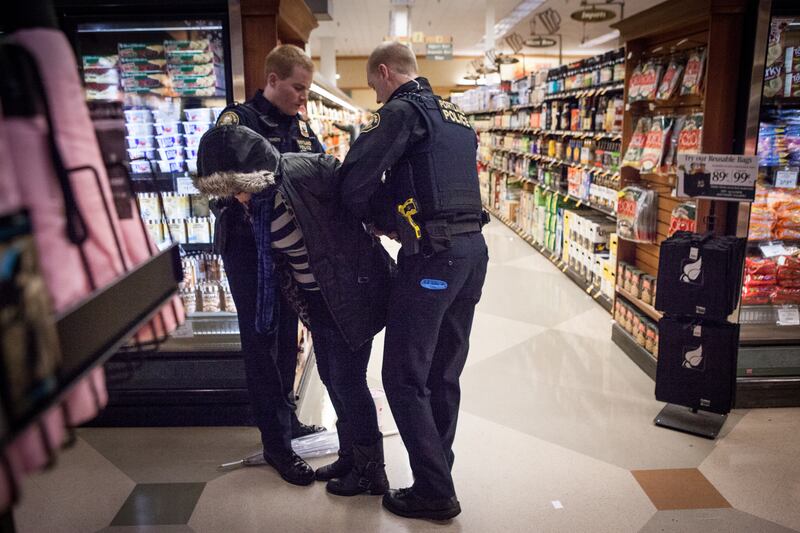
The door of the apartment in the Swindells opens, and Hettman and his partner, Brad Yakots, see why it took so long for the man inside to respond: He’s using a walker.
The cops loosen their tight shoulders a little. They tell him they are taking him for a mental-health hold, and it requires putting him in handcuffs. “Can I have a cigarette first?” the man asks.
Yakots says sure. Hettman and the third officer, James Escobar, guide the cuffed man down the hall. It’s a slow shuffle, and the man’s pants slide down his hips. He complains, so Yakots—28, with a runner’s build and close-cropped red hair—hikes them back up for him. They put the man in a patrol car. He never gets his smoke.
Later that day, the officers say most incidents with people suffering from mental illness go without incident.
“This guy has a walker and is probably not much of a threat,” says Hettman, 31, who is tall and still lives up to his college nickname of “Skinny.”
“But what if he has a gun or a knife and wants to kill me? We’re constantly having to make split-second decisions.”
With Oregon’s broken mental-health system, Portland’s police are often de facto front-line social workers. Police estimate they come into contact with 1234s (their dispatch code for person in crisis) more than 34,000 times a year, although they lack a good way to track such calls.
The DOJ settlement calls for reinstituting a team of officers whose first duty is to deal with the mentally ill.
The two have been partners for 2½ years—a rarity, given that most patrol officers work alone. In that time, they’ve made 921 arrests and used force 12 times.
Their number of arrests is high by department standards. But their use of force is low—just over 1 percent. Overall, Portland officers used force in 3.86 percent of arrests in 2011.
“Your tongue is the biggest tool in dealing with people in crisis,” Yakots says as the car drives near Central Precinct. “Casey and I have different strengths, and we deal well with people who aren’t playing with a full deck that day.”
That’s part of the reason Yakots and Hettman signed up for the latest version of a crisis intervention team.
Details of how large the CIT squad will be, and how much more training its members will get are still being worked out, Reese says. But the team will surely get far more than the 40 hours of standard mental-health training every line officer gets each year.
The Police Bureau declined to give WW a list of officers who applied for the CIT squad, but it says 56 cops, or about 15 percent of the department’s 365 patrol officers, signed up.
Portland had the state’s first CIT program, from 1995 to 2006. A small band of officers who had volunteered handled as many crisis cases as possible. The unit had some success, but high-profile deaths still occurred when no officer from the CIT team was on the scene or available.
That includes Jose Mejia Poot, a day laborer who was on a mental-health hold when an officer gunned him down inside the BHC-Pacific Gateway Hospital in Sellwood in 2001. CIT officers had already calmed Poot earlier that day, but hospital staff called when Poot got out of a secured area. Poot, who could not speak English, tore off a strip of an aluminum door frame and threatened staff. CIT cops weren’t available a second time, and the two officers who showed up shot him dead.
CIT officers also weren’t on hand for the death of James Chasse in 2006. Chasse was a mentally ill man police chased and knocked down in the Pearl District, believing he had urinated in the street. An autopsy showed he had 26 broken bones, including 16 of his ribs, some of which punctured a lung. The city later paid Chasse’s family $1.6 million to settle a wrongful death case.
In response, then-Mayor Tom Potter required all officers to get 40 hours of annual crisis intervention training—but then did away with a dedicated CIT team.
Chris Bouneff, executive director of the National Alliance on Mental Illness in Oregon, says the DOJ’s demand that Portland reinstate the CIT team is a positive sign.
Having officers with advanced mental-health training will help, he says, but it will require one important thing: that the CIT squad is big enough to respond whenever needed.
“There are officers who just don’t think it’s necessary,” Bouneff says. “You don’t want those officers dealing with people in a mental-health crisis.”
In the past, many officers didn’t see CIT as a way to get ahead in the bureau. Now, Yakots and Hettman say, they see it as an essential skill set for a cop.
“Attitudes will change,” Hettman says, “and the more senior people and the holdouts, they won’t have a choice but to change.”
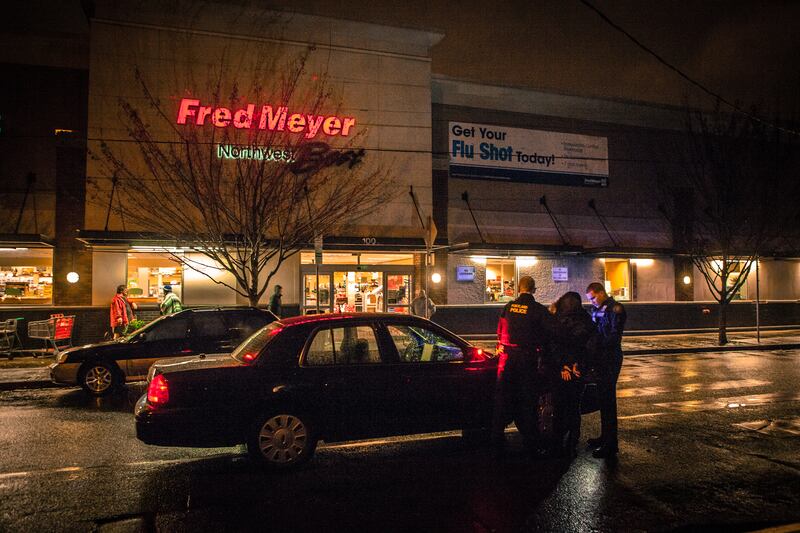
Officer Herb Miller, 47, was a truck driver and National Guardsman before joining the Portland Police Bureau 15 years ago. He’s spent most of his time on the force dealing with the mentally ill, as one of the original members of the CIT unit and then spending a year on the bureau’s Mobile Crisis Unit. That assignment—limited to a year—ended in June.
The MCU is supposed to help people with mental illness who show up frequently on cops’ radar, before they have another confrontation with officers. The mobile unit consists of one sworn officer and a social worker with Project Respond, which is run by Cascadia Behavioral Healthcare, a private mental-health agency.
The DOJ settlement calls for expanding the availability of the unit. It doesn’t involve any extra training, but the bureau says the close on-the-ground work provides a wealth of knowledge.
Miller found a special draw to both the crisis intervention team and the mobile unit: Both his nephew and niece committed suicide.
“Somehow, with my training and experience, if I can help prevent that tragedy for someone else’s family, that would be rewarding,” Miller says.
Yet his time on the MCU was often frustrating. He and his partner tracked one man with mental problems who they knew had a gun. But under the law, the MCU team can’t force anyone into treatment, and can’t arrest anyone until they become a danger to themselves or others.
Last October, the man locked himself in his apartment and was pointing his gun out the window at people in the street. The situation ended peacefully, but only after it turned into a lengthy negotiation and an evacuation of the building.
“We had done all of that work ahead of time,” Miller says. “We still weren’t able to intervene and prevent the incident from happening. I saw the whole trajectory of the way it went, and we couldn’t intervene until he crossed the line.
“I had no more control or power than a regular officer.”
Because of his experience, Miller says he signed up for the CIT this time around out of a sense of obligation.
But the price of keeping beat cops apart from the mentally ill may be the psychological toll it takes on the officers who specialize in crisis intervention.
Hettman, during his first week as an officer, watched a woman he was trying to help jump from the Fremont Bridge to the pavement below; he heard her hit the ground. “That was my rude awakening to the mental-health issue,” he says.
Miller couldn’t save a man who jumped from the Vista Bridge. “Things like that get to you,” he says. “You have to compartmentalize it and leave it at work.”
And for these front-line teams, the psychological toll can mount.
“Going in as a CIT officer, they’re going in with a sense of, ‘OK I’ve been trained to help these people,’” says John Nicoletti, whose Denver-based firm, Nicoletti-Flater Associates, specializes in police psychology.
“When that doesn’t work, especially when it’s a traumatic ending like a suicide, you get the combination of the trauma, and second-guessing of what you could have done differently.”
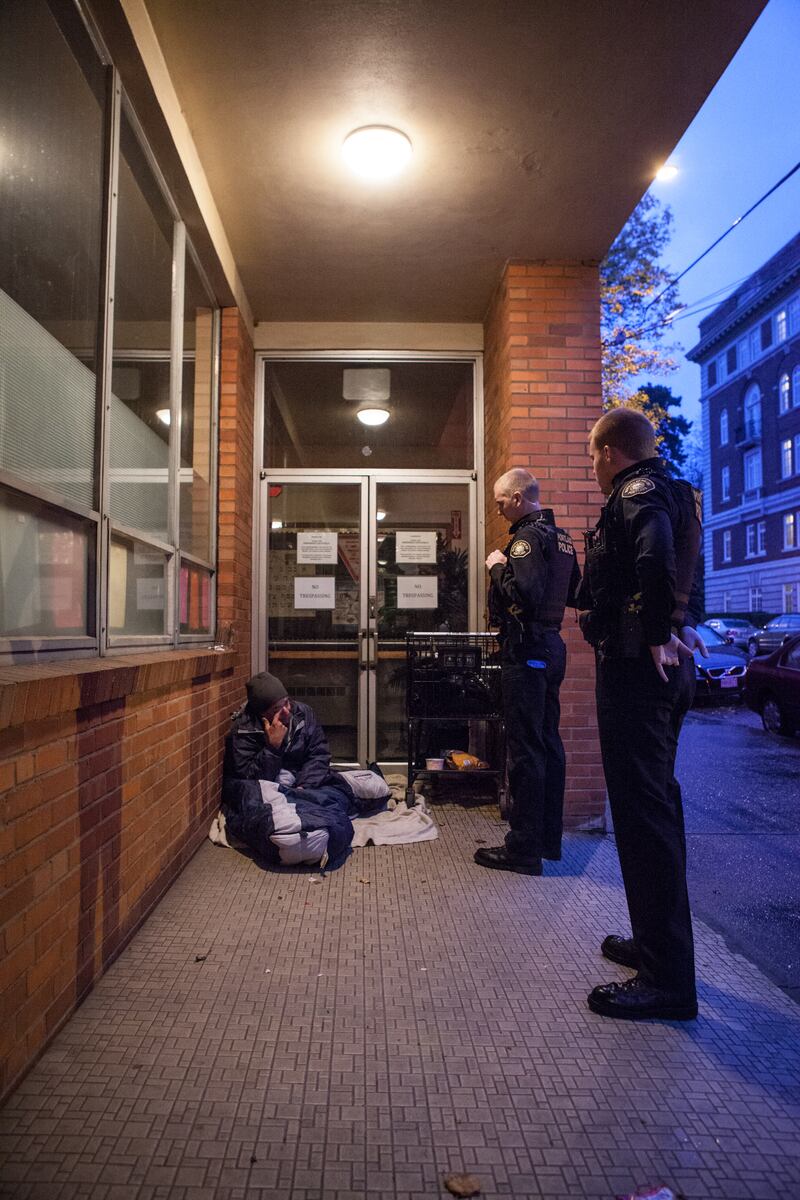
Officers say that since the DOJ started its investigation in June 2011, they’ve been increasingly reluctant to use force, even when they think they should. The bureau says it was shifting its culture before that: Statistics show use of force has declined 33 percent since 2008.
But some cops say the DOJ report has created a chilling—and dangerous— effect.
During one ride-along WW took with police, three officers responded to a domestic-violence call at an apartment near Southeast Glisan Street and 106th Avenue. A pregnant woman was hurt, but she insisted she had fallen and that her boyfriend—with face tattoos and a bad attitude—hadn’t pushed her.
The angry boyfriend was bigger than the officers. In the end, they didn’t need to make an arrest—despite their fears they might have to use force to do it.
“I thought for a minute we would have to go hands-on,” one officer, Michael Roberts, says.
“I was just thinking about the Taser,” says another, Josh Silverman.
“I’m too scared to Taser now,” Roberts answers. “You gotta go hands-on.”
Silverman, 28, has been a cop for three years (he is a former WW intern) and says his academy training put an enormous emphasis on officers protecting themselves—be it with less-than-lethal weapons, or by going “hands-on,” using holds and other physical tactics to gain control.
“When you get out of the academy,” he says, “you think there are ninjas waiting around every corner to attack you.”
If there is a chilling effect from the DOJ stalling the use of force, some critics say it’s good—if only because police training has instilled too much paranoia among officers.
“There are people who walk the streets all the time thinking someone is going to hurt them,” says Dan Handelman, director of Portland Copwatch. “And they’re the ones we call mentally ill.”
Eriks Gabliks, director of the Oregon Department of Public Safety Standards and Training, says the police academy’s 16-week course has increased its role-playing scenarios on how to better communicate and diffuse situations. And as of Jan. 1, all cops-in-training will get 15 hours of mental and behavioral health training, up from 12.
The FBI, which tracks officer deaths nationwide, doesn’t keep statistics on at what point in an encounter an officer is killed. It also doesn’t track the mental health of those who kill cops intentionally.
The FBI does say that 72 American law enforcement officers were feloniously killed in 2011. Two were in Oregon, including one Eugene officer shot by a woman with severe mental illness.
Officer Macho, from the East Precinct, counters that he’s got a pinkie finger and a thumb that no longer fully function because he was afraid to use the appropriate level of force to end a volatile arrest. He tore the tendons of his pinkie chasing down and arresting a juvenile vandal; he tweaked the thumb when he says he was attempting to keep a man from punching him. In both cases, he says that four years ago, he would have used a Taser.
“With what’s come down from the Department of Justice, the public’s the real loser on this because there are many times when the officer feels like he’s got to choose between career survival and actually jumping in when he would have in the past.”
The DOJ report, Macho says, was a “hack job”—noting the report found fault with five cases out of thousands of arrests.
“What percentage of human beings get it as right as often as we do?” Macho asks.
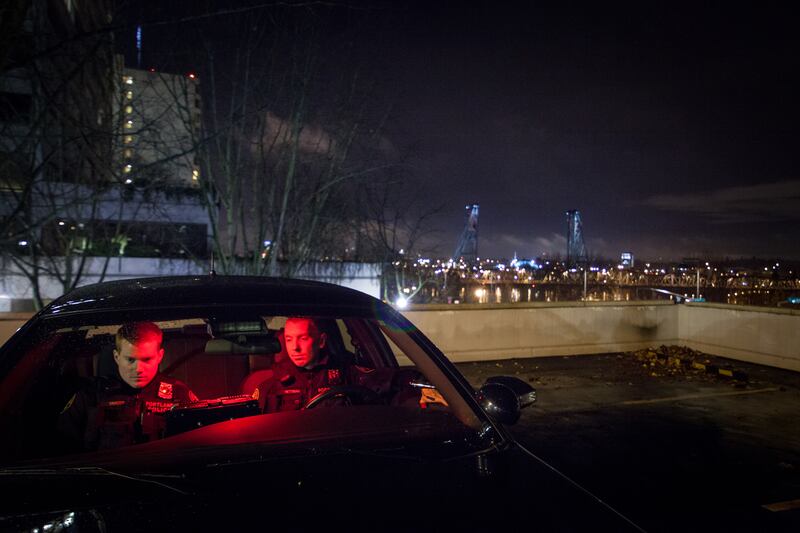
Bouneff, of the National Alliance on Mental Illness, says the Clackamas and Marion county sheriff’s departments both have good reputations for the way they handle people in mental crises.
Both agencies started crisis intervention training in 2005, without an outside mandate, such as the one the DOJ has imposed on the Portland police.
Clackamas County Sheriff Craig Roberts added crisis intervention training only one month after taking office. “[Roberts] had identified there was a need for better training related to mental-health issues for deputies,” says department spokesman Sgt. Adam Phillips.
Clackamas doesn’t have a CIT team—Phillips says the county is too spread out to reliably dispatch a team. In Marion County, all deputies have received crisis intervention training, and those who want it can get advanced training.
“Voluntary programs around the country are really the most successful,” says Deputy Kevin Rau, formerly the Marion County Sheriff’s Department’s training coordinator.
What will success look like in Portland? The DOJ settlement calls for a series of quantitative measurements to see if the Portland police are making improvements: for example, use of force against those with real or perceived mental illness; the number of officers who frequently use force; the rate of Taser use; and complaints against cops.
Hales says he’s also looking at a more subjective measure, what he calls a more “modern and humane” police force.
“Are people that you talk to about the Police Bureau ready to call when there’s a problem on their street?” Hales says. “Or are they wary about calling?”
Yakots and Hettman can’t help but notice the irony in one recent call.
They were the first on the scene Nov. 26 after neighbors called police to a downtown apartment complex, where an 81-year-old man was hallucinating that cops were being shot and killed in his hallway. He was swinging a hatchet and had already chopped through a fire door to reach the imaginary police officers who had been shot.
The cops drew their guns. “He’s trying to save police officers,” Yakots recalls, “and we might actually wind up having to hurt the guy.”
They didn’t. They gave him clear commands, and he let them cuff him for a mental-health hold. He’s since been committed and could be in a mental-health facility for as long as six months.
